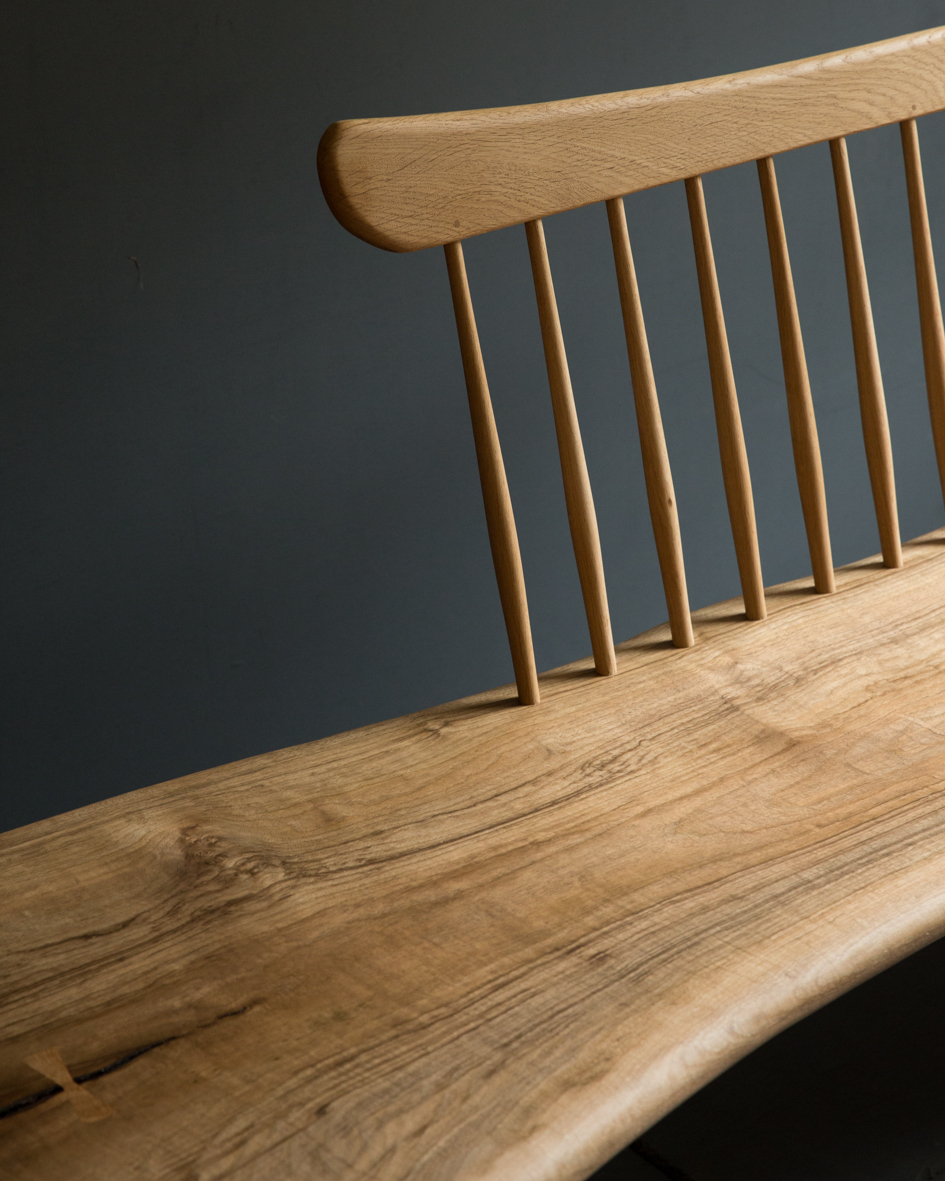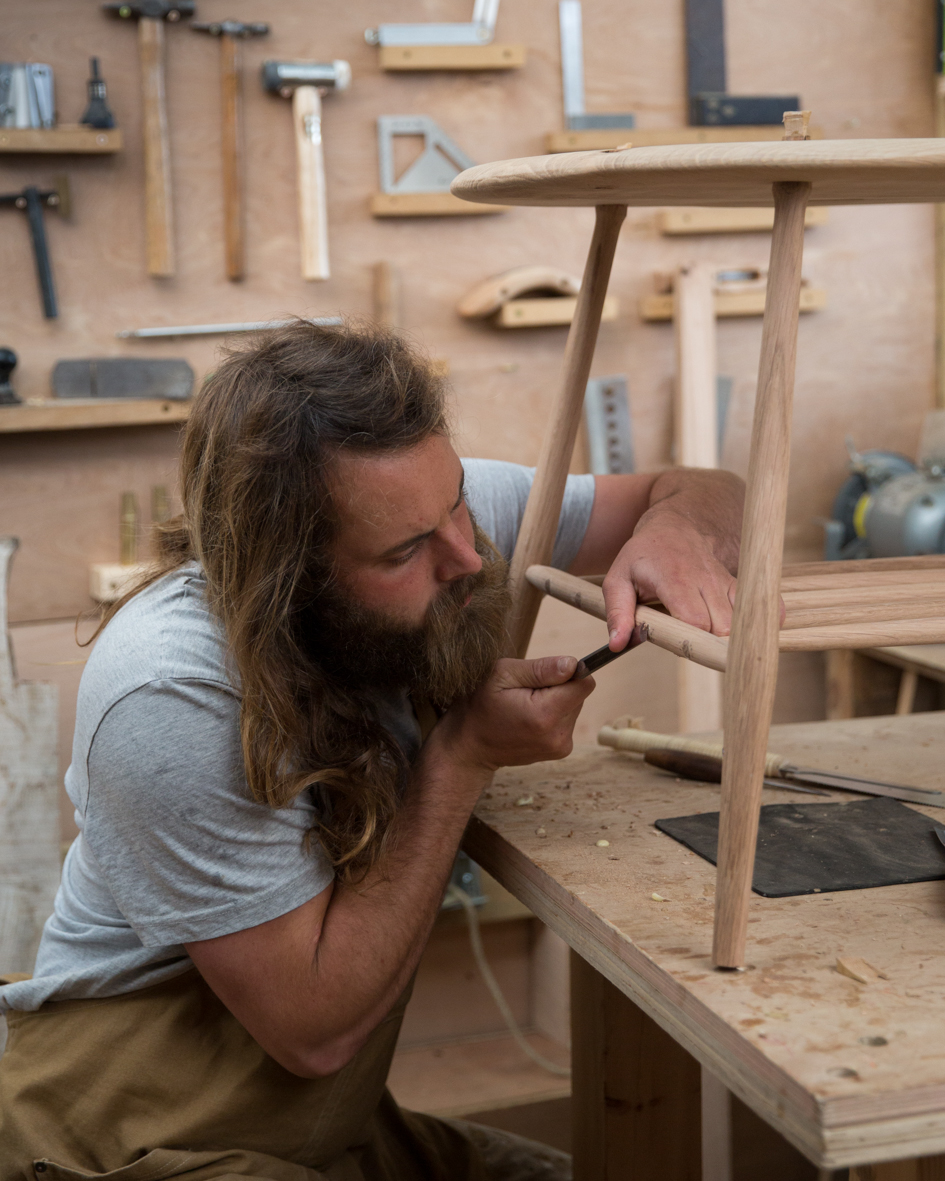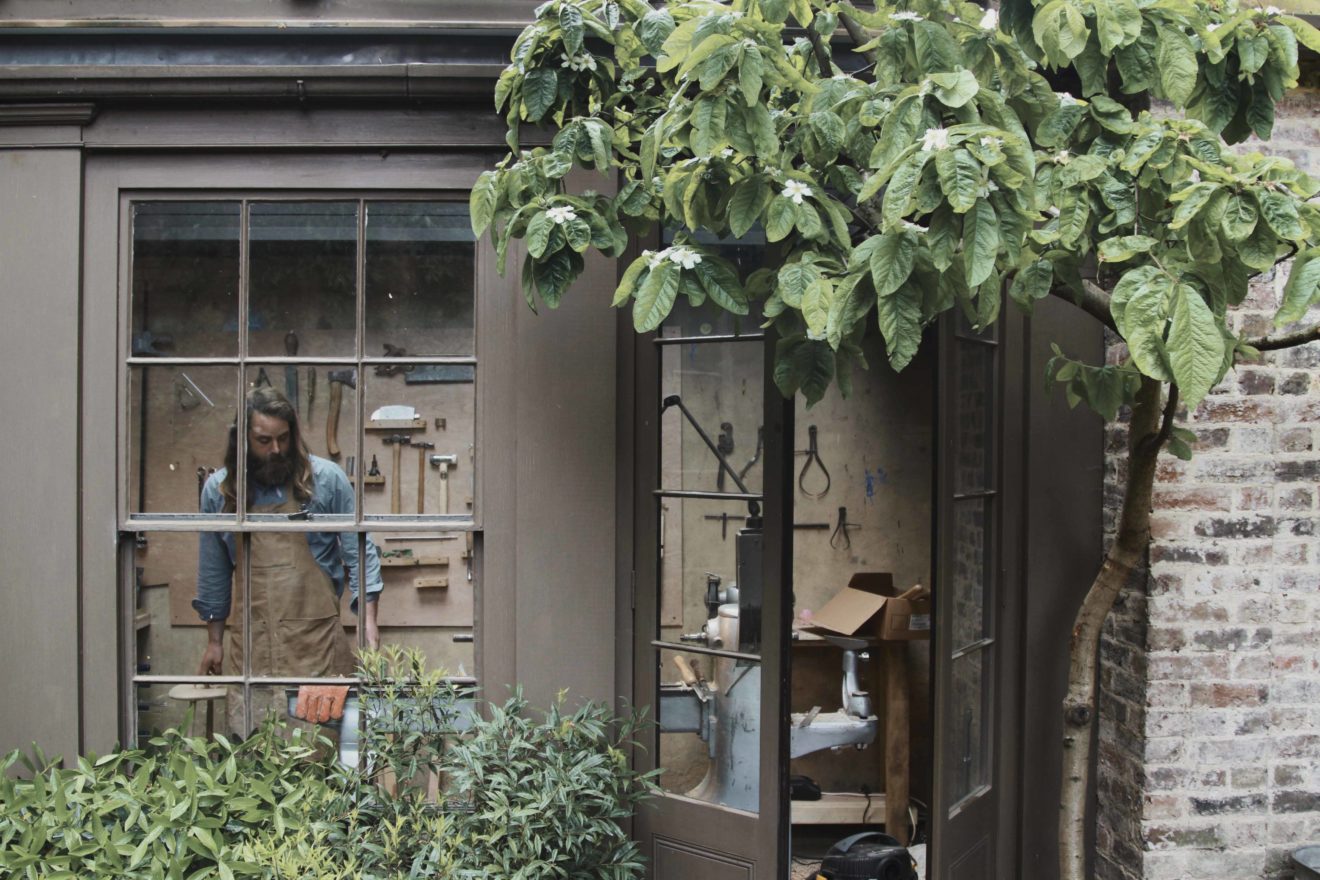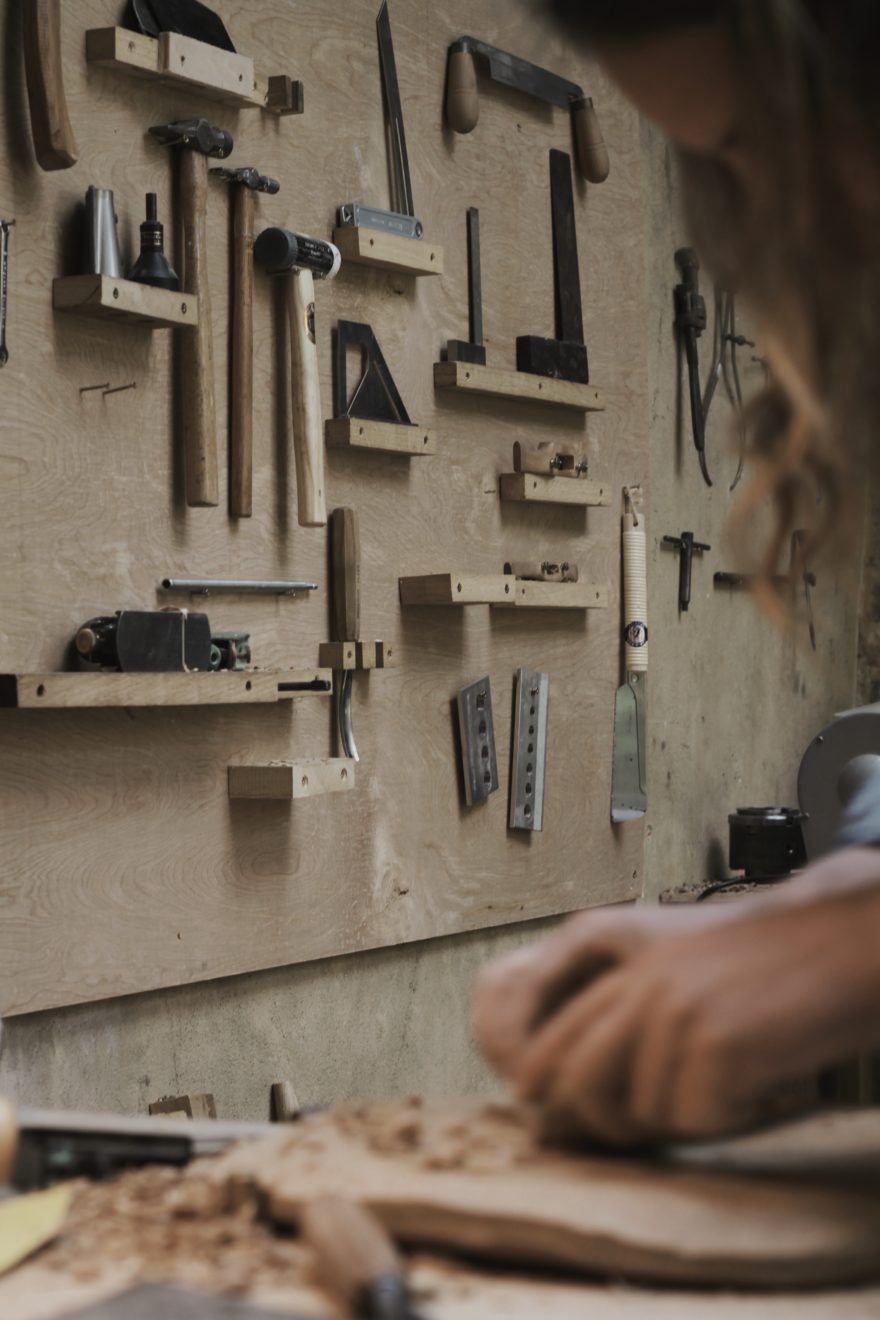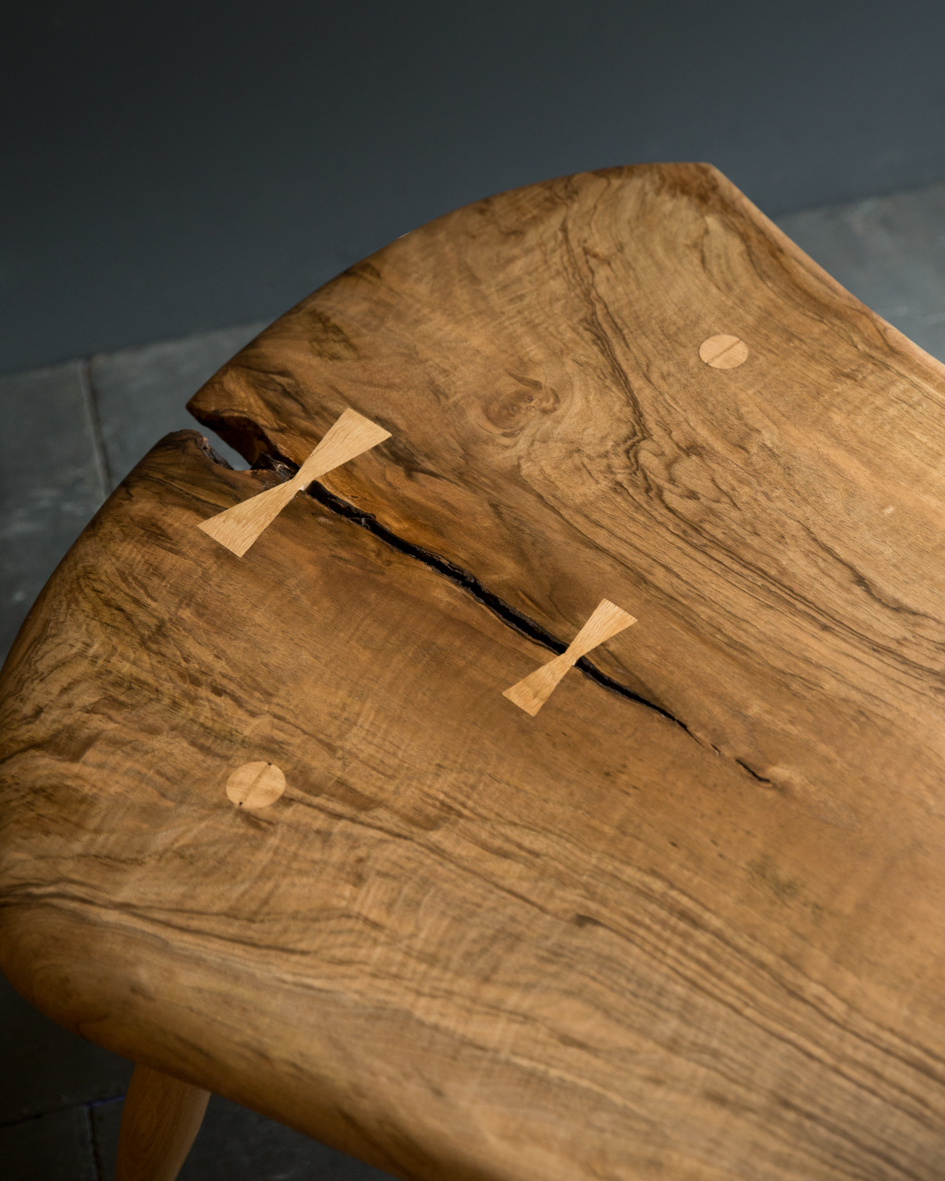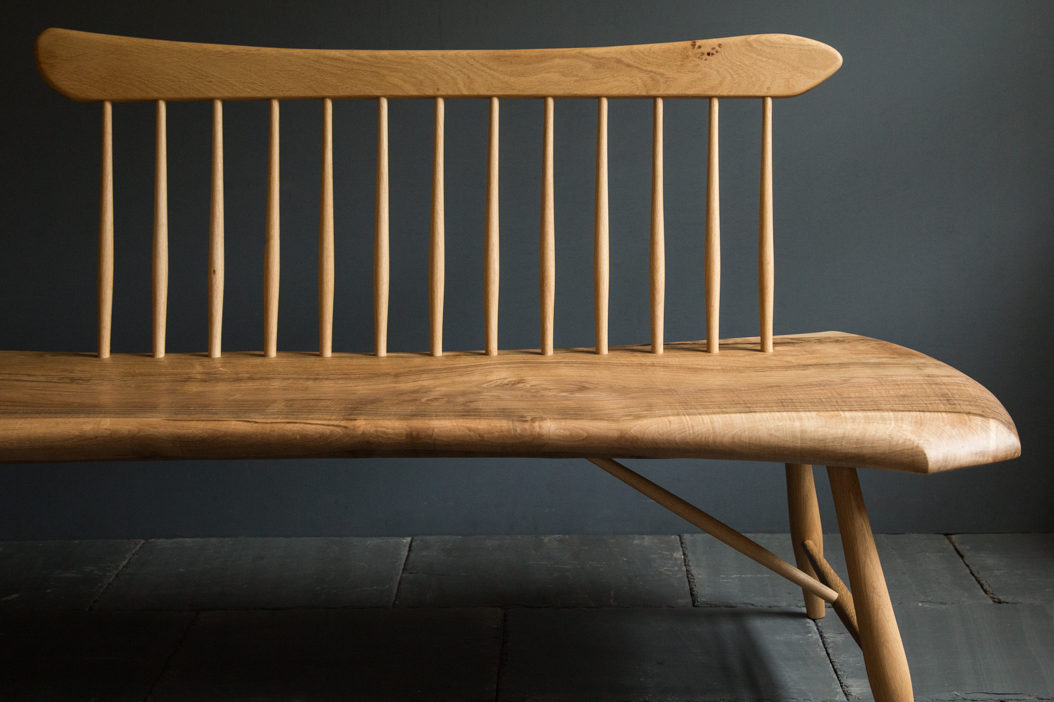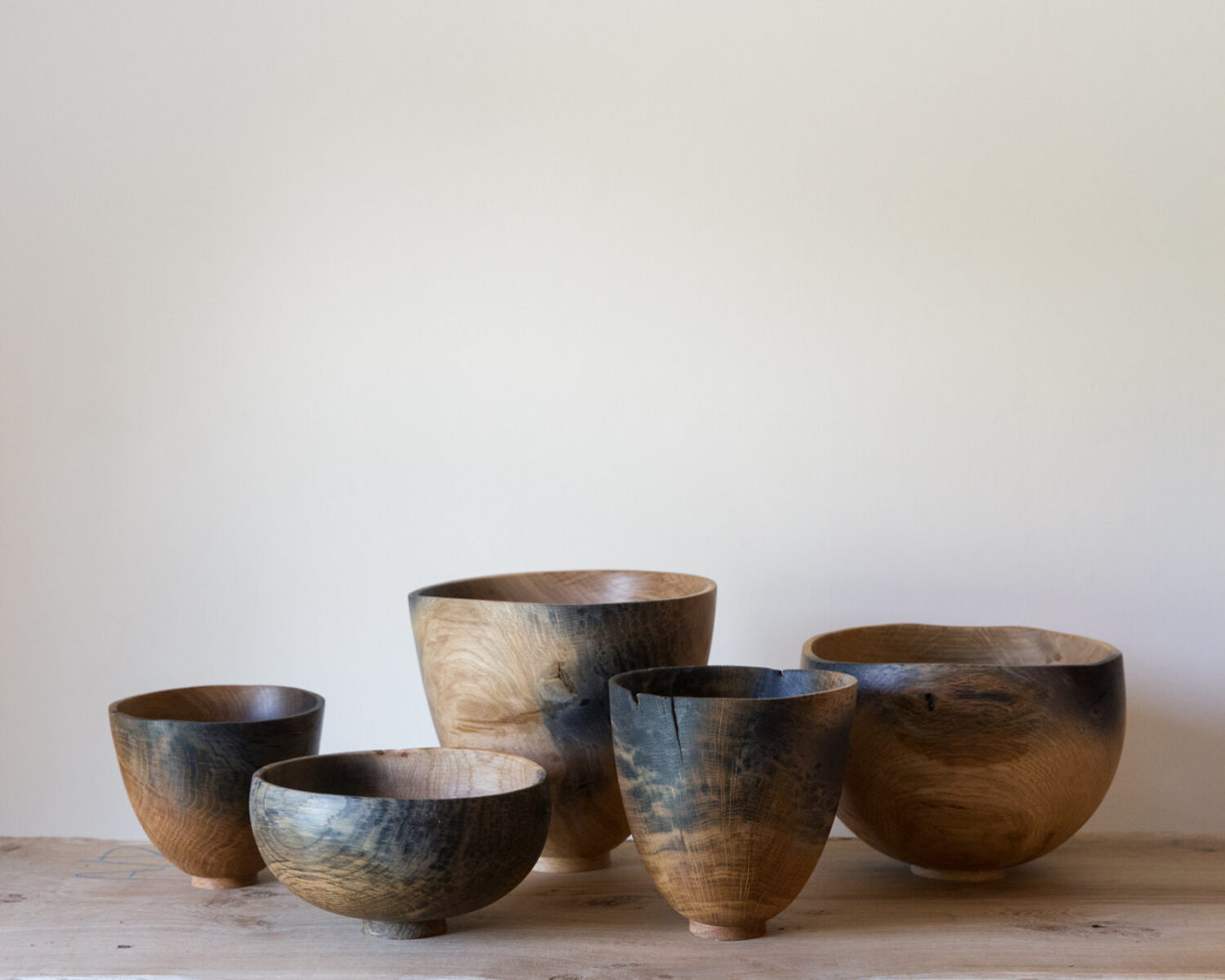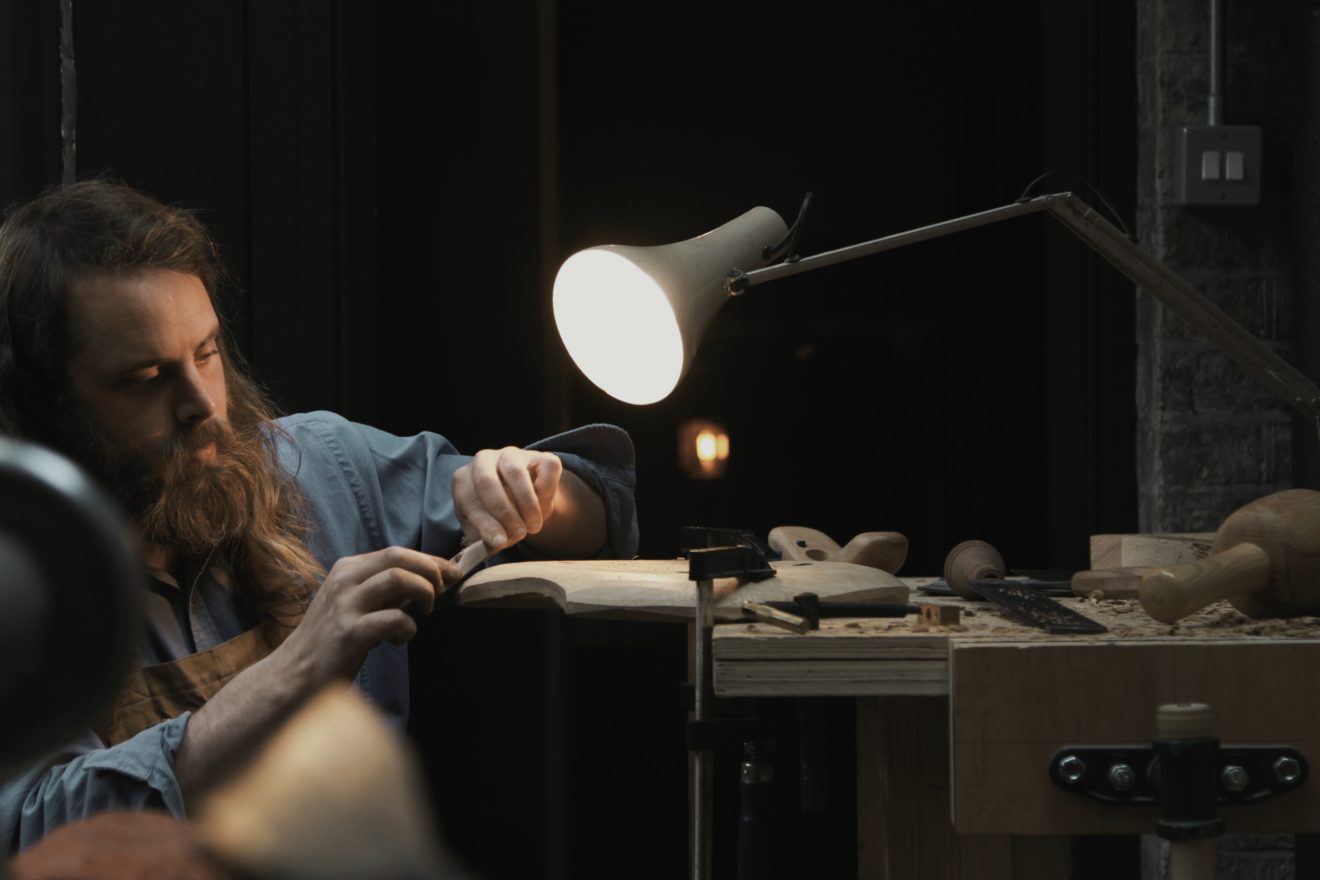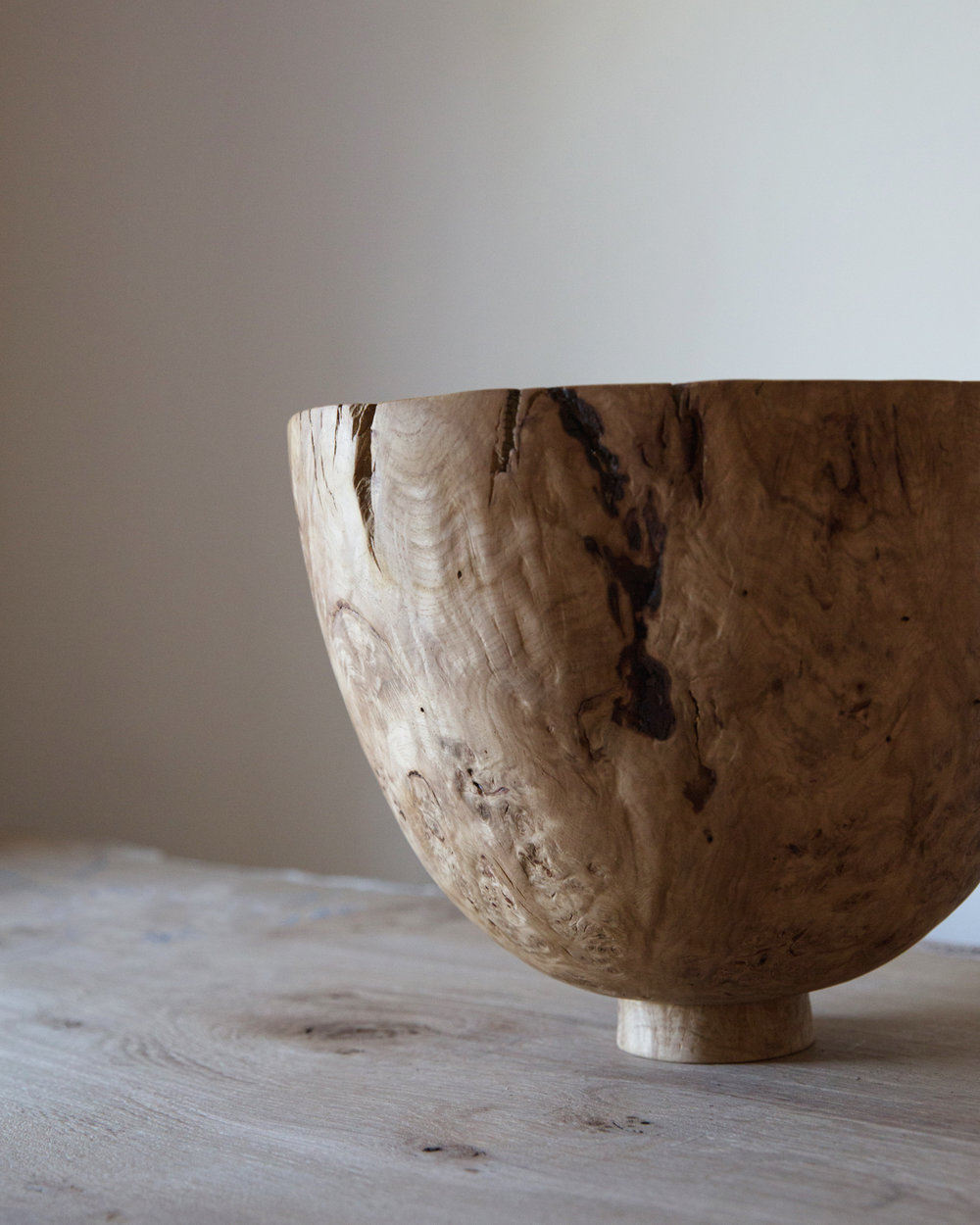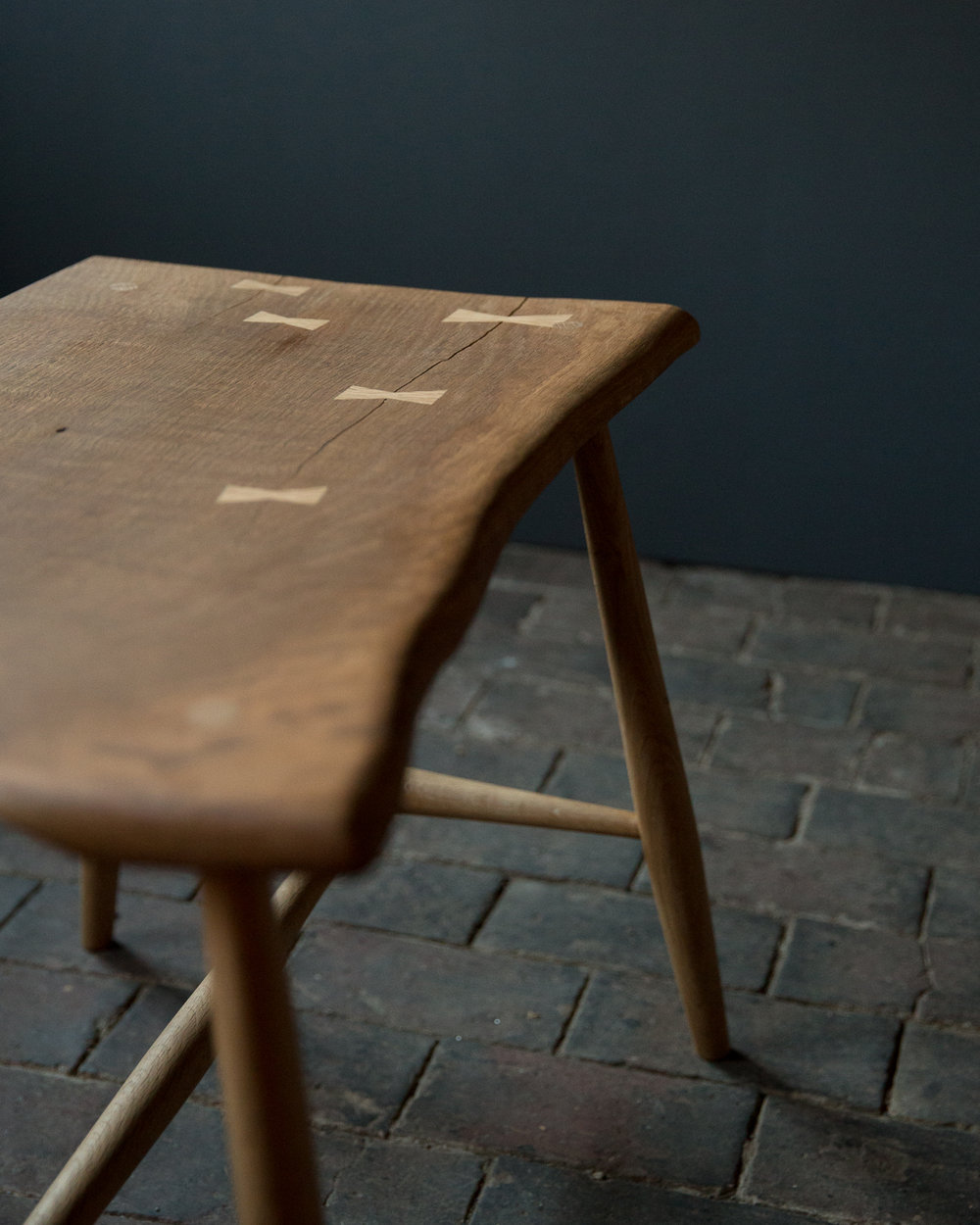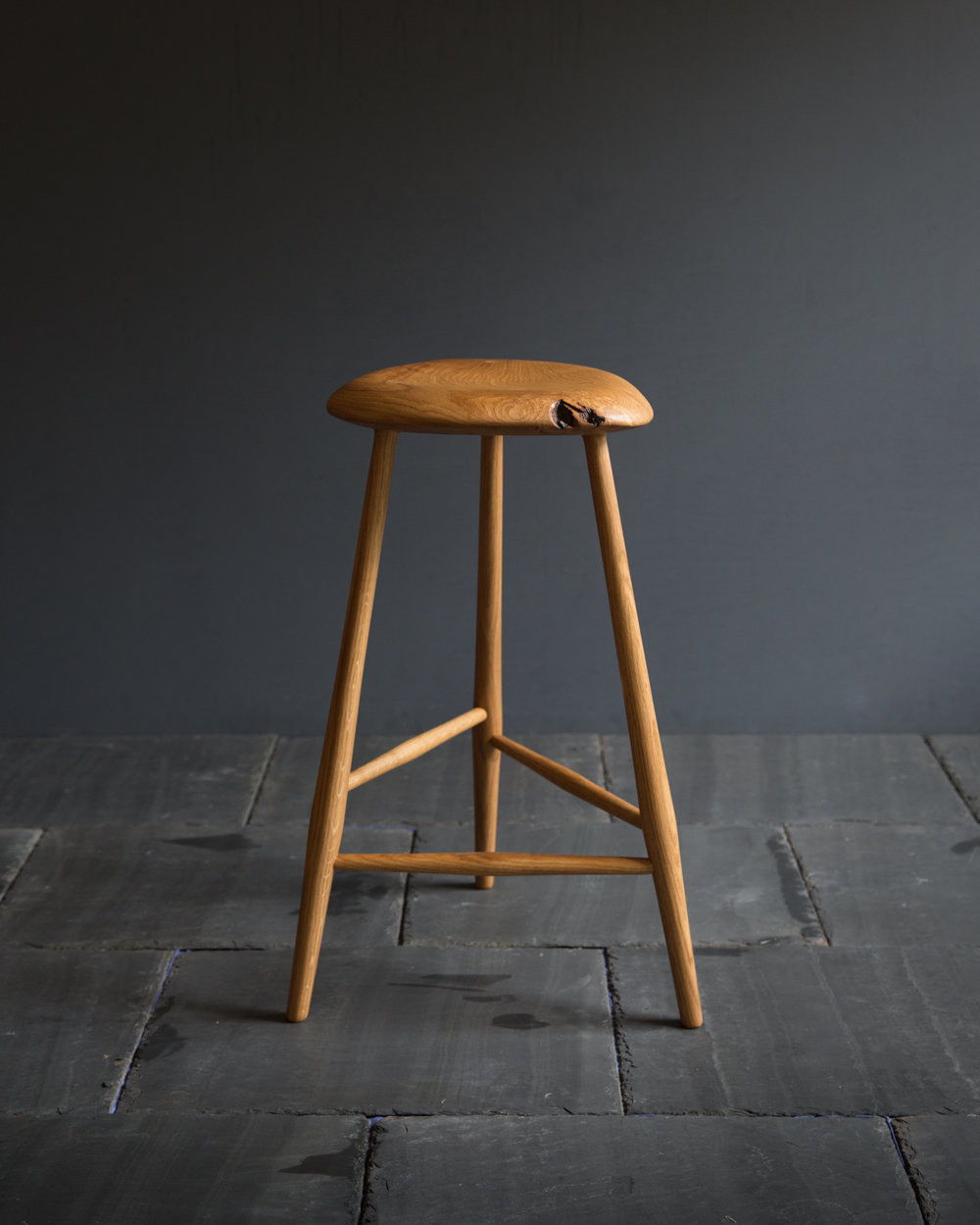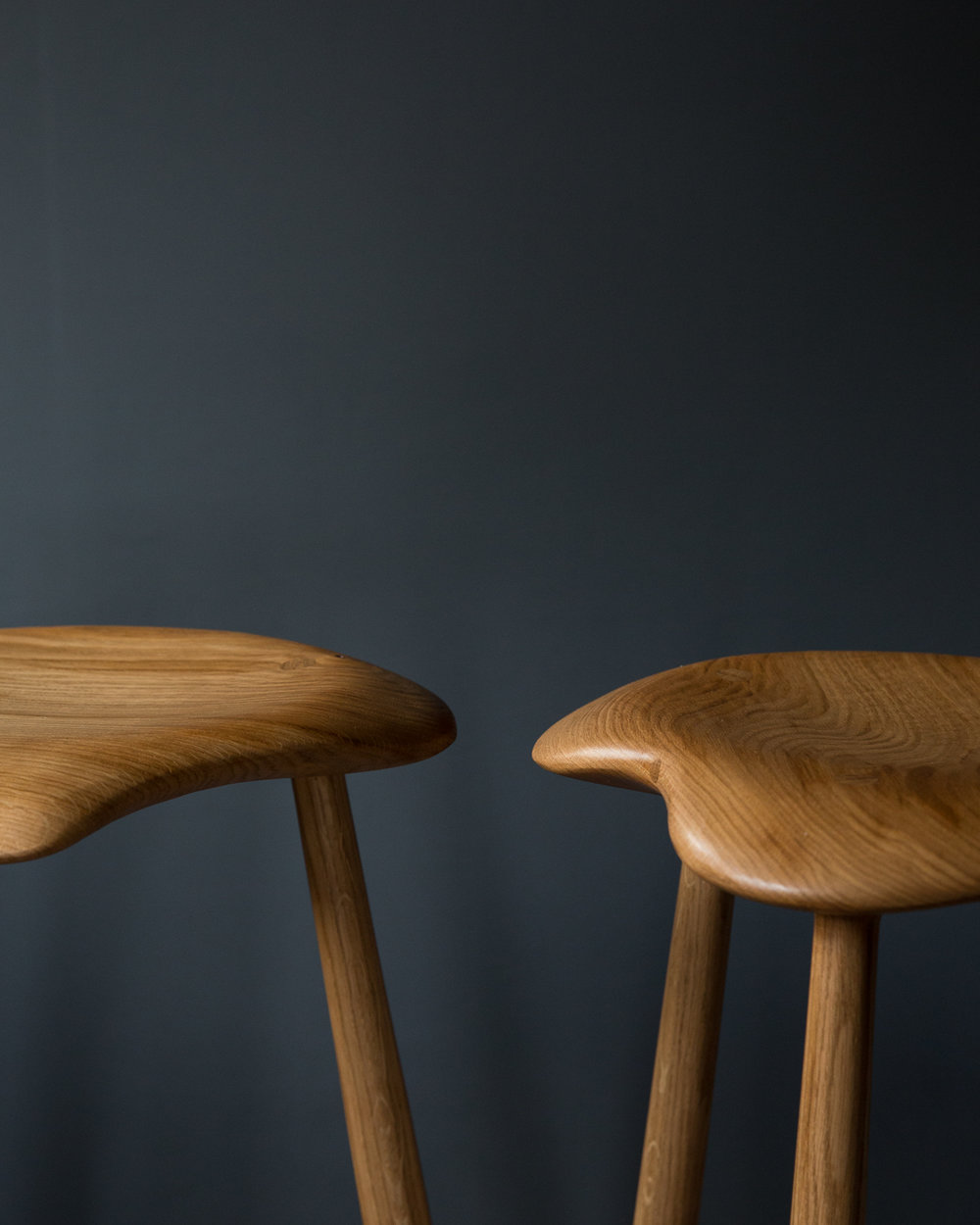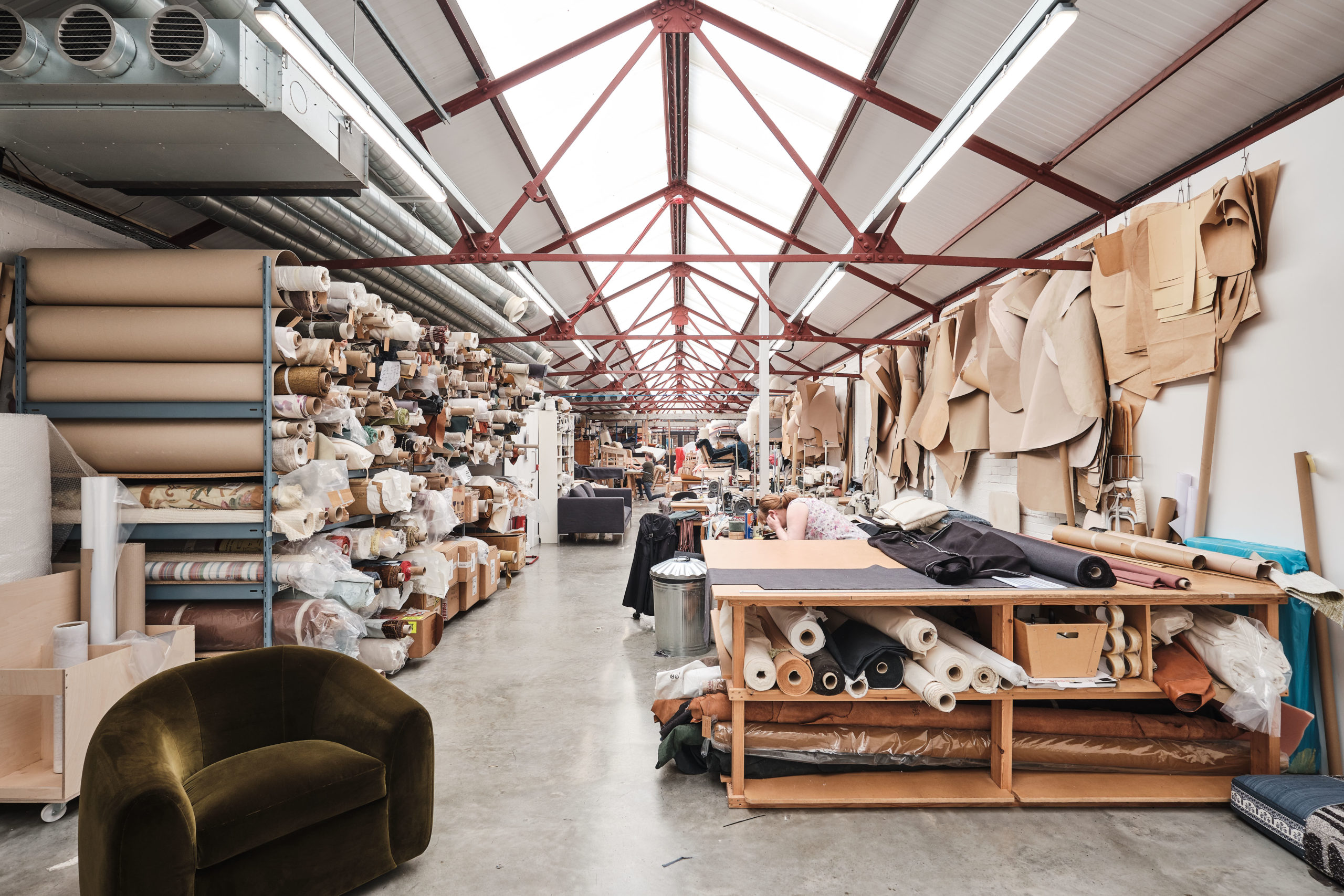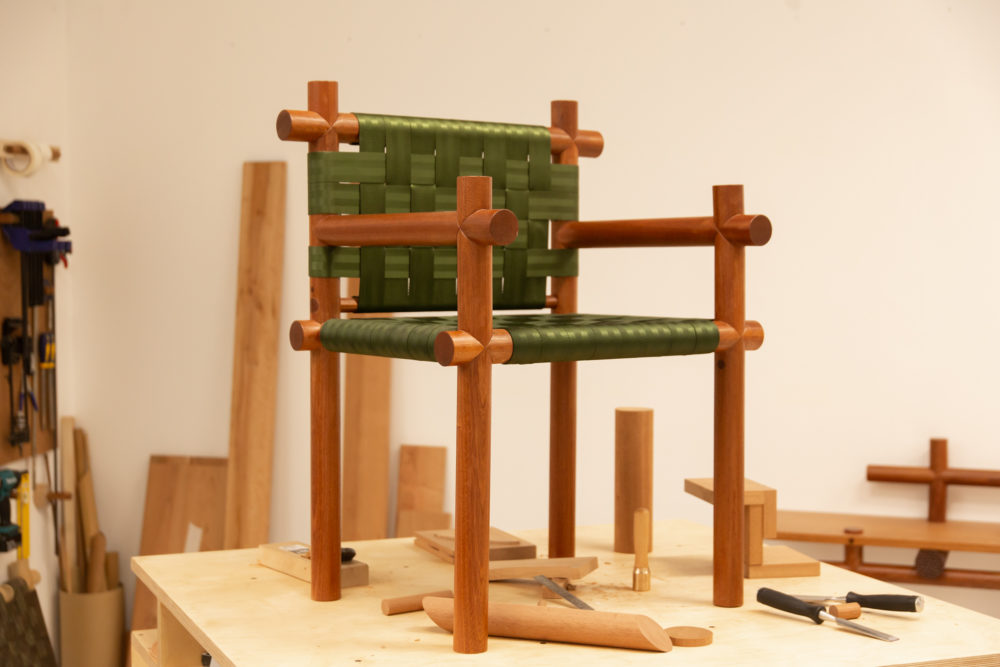Bobby Mills
Self-taught woodworker Bobby Mills uses British trees from sustainable sources to hand-make benches, stools and vessels using traditional techniques. We first discovered Bobby’s beautifully sculptural work when he was chosen to undertake a residency at the Blue Mountain School during London Craft Week last year. We chat with Bobby to find out where he finds inspiration and how his surroundings inform his work.
Before I settled into woodworking, I was a photographer. I still continue to work on long-term photographic projects that are primarily focused on environmental narratives.
It was during an extended trip working on my photography that I met some woodworkers in the most serendipitous circumstances and really connected with them and their work. I’ve always had an interest in fixing and making things, having grown up helping my father fix old buildings in West Sussex. He’s a builder but I’ve always viewed him as a craftsman, given his sympathetic approach and his preference for hand tools and the use of old techniques. I worked with him throughout my younger years, which gave me a good foundation in tools and materials.
Long story short, I was living in a van that broke down while I was in Scotland. I made a stool whilst I waited for it to be fixed and that led me into woodworking!
Workshop days vary depending on what I’m making. Generally, it’s coffee and emails in the morning, then making for the rest of the day. I tend to work on just one piece or a particular collection of work at a time, from start to finish. This might sound like the opposite of efficient but for me, it’s about giving all of my energy to the thing I’m making. There’s no production line.
I live close to the sea, so I head to the beach to surf before or after work if there’s enough daylight left. This is a really important time for me. It’s a place to unwind and think about the day’s work.
I’m constantly sourcing new wood, so that really drives me. I also think it’s helpful to keep variety in my work. New materials always inspire me to think about and create new pieces.
My home and studio are up on a hill – 650ft above sea level – and it can definitely feel like I’ve been up on this hill for weeks on end without seeing many other people. Ultimately, I enjoy the solitude and remind myself that I’m doing what I want to do and that’s the real motivation. And there’s Bud the cat, he helps.
Inspiration comes from many places. First and foremost from the wood I work with. It’s so varied and nuanced and each piece tells a story of time passing and the ebb and flow of the seasons. I enjoy finding sculptural qualities in the everyday, which I think comes from photographic references.
The wood directs what I’ll make, so in that sense it’s fundamental. Different wood lends itself to different pieces of work. I let the initial idea (a bench or a vessel for example) come from the wood and then I’ll respond to it. The item I’m making will often change in form as I respond to the grain and character that I’m uncovering as I go. With personal work, the finished piece can be a long way from my initial thoughts.
An important thing for me is also in understanding where the wood came from and how I’ve come to be able to work with it. To date, I’ve only used native wood from around the UK and mostly from very close to where I live (but not exclusively). Primarily, I get windblown trees or wood from conservation projects and countryside management programs. I’m always looking to celebrate each piece of wood, so the more I can understand about where it grew and why or how it fell, the more I can engage with the piece and then pass that on with the finished work.
I’d love to make a tool. I once met a 93-year-old cabinetmaker called Harriet. She had worked with wood all of her life and showed me a little box from a shelf in her workshop. I opened it to find a precise shoulder plane made from one piece of metal. She explained that she’d made it from a piece of railway track while she was in Gibraltar a long time ago.
The biggest challenge was sustaining the early days of the business. I wanted it to grow at a natural pace. It takes time to build a client base, so there is a financial tightrope to be walked.
To name only one highlight, I’d have to say being given the opportunity to work with a 400-year-old piece of English Walnut. It’s so rare to find English Walnut of this age and size. I made a large bench using a single slab of the walnut for the seat, gently sculpted and shaped for comfort and aesthetics. The bench was finished with an English oak undercarriage and spindle back. It was wonderful to be entrusted with the job of honouring the wood and making something worthwhile with it. To see the tree live on. I’m not sure I’ll ever see a piece of English Walnut like it again.
My surroundings are a constant influence. My work is an engagement with the natural environment around me and I’m constantly studying the trees and landscapes that I pass through. I live next door to temperate rainforest woodland and I run through the valleys and up the hills a few times a week. It’s the most sensory experience. The air is always damp, the river’s always flowing and making a noise, and the trees are heavy with rare lichens. It’s ancient woodland and unlike any other that I’ve seen in the UK. It’s a very calm place to be and I think that feeling informs my work.
The first stool I made. It’s got three legs with two stretchers forming a T shape and a peculiarly shaped top. Those six pieces of wood come from the same tree; a Sussex Honey Oak (I’ve since formed the Tuckmans collection with pieces that all come from this single old oak tree). I made the stool with no plan or drawing and everything is done by eye, no angle is measured.
The stool was the beginning of my woodworking career and in many ways, still informs my work today. I made it with no intention of making anything other than that stool for myself, and that’s snowballed into what I’m doing now. I continue to work without drawing unless specifically necessary and all of my angles and joinery are created by hand and eye. I guess I’ve stuck to the same principles as when I made that first little stool.
I’m becoming increasingly interested in creating bodies of work. I find the relationships and dynamics between different pieces fascinating. There isn’t one person or brand I have in mind in particular. I enjoy the surprise of not knowing who I’ll pick up the phone to next. I’m going to continue letting the work grow and develop organically. It’s worked so far and I can only hope it will continue to do so!
My advice would be to follow your intuition and learn from your hands. My primary learning came from doing, so I would urge anybody to make whatever they want, but most importantly, just go and make.
Find more of Bobby’s work on his website, here.

